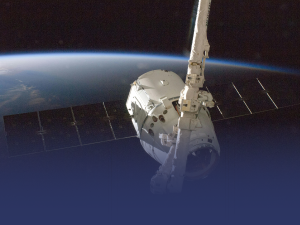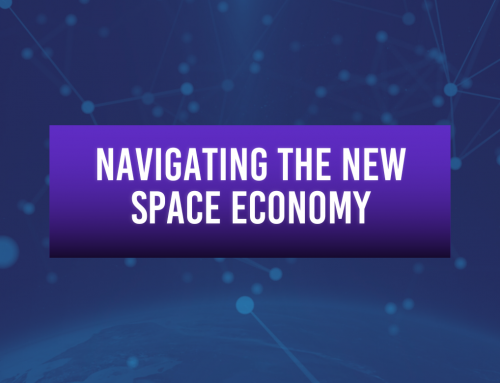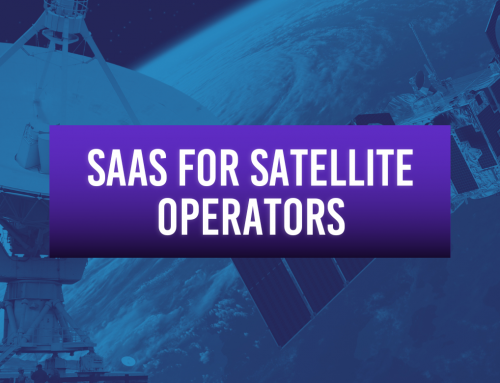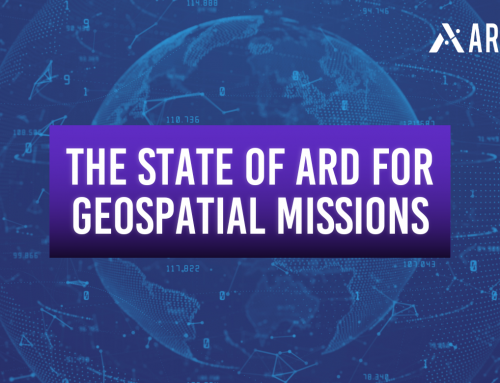Why Your Earth Observation Mission Needs an API
From weather updates on our smartphones to the intricate systems controlling satellites orbiting our planet, we live in an API-driven world making global connectivity possible. Their role is undeniable in everyday applications, but what about Earth Observation (EO) missions? Why would they need APIs?
In this article, we’ll highlight the importance APIs play in EO missions and how it enhances access to critical data and insights.

What is an API?
Before delving into why your Earth observation mission needs an API, let’s clarify what an API is. In essence, an API (Application Programming Interface) is like a contract that enables seamless communication between different software applications. Think of it as the bridge that connects two islands, allowing them to exchange information and work together effortlessly by following same road rules.
APIs are everywhere, powering many services we use daily. From embedding Google Maps on websites to booking flights online, logging in with your Google account, making secure PayPal transactions, and even sharing posts across social media platforms, APIs are the unsung heroes behind the scenes.
The Importance of an API
APIs are crucial because they promote efficiency, innovation, and collaboration in the digital world. They allow developers to leverage pre-built functionalities and data from other applications without reinventing the wheel. This saves time, resources, and accelerates development cycles. Moreover, APIs foster innovation by enabling the creation of new services and mashups that combine capabilities from multiple applications, and to create new novel capabilities.
Let’s use an analogy to illustrate this idea. Imagine you’ve booked a table for four at a local restaurant. A few days later, two of your friends ask if they can bring their partners, increasing your party to six. You need to call the restaurant to modify your reservation. A friendly customer service representative answers your call, checks for availability, and updates your booking.
In this scenario, you are one application (the customer), the customer service representative is the API, and the restaurant’s reservation system is another application. Without the API (the customer service representative), you’d wouldn’t be able to access the restaurant’s internal systems and update your booking, potentially facing delays or complications.
Similarly, in the context of Earth observation missions, APIs play a pivotal role in streamlining data access, facilitating integration with other systems, and unlocking new possibilities for analysis and innovation.
Why Your Earth Observation Mission Needs an API
Enhanced Data Access and Integration
Earth observation missions generate diverse data types, including satellite imagery, atmospheric readings, and environmental statistics. An API simplifies access to this data by providing standardised methods to query, retrieve, and interact with datasets. This integration ensures that various data sources harmonise, providing a more comprehensive view of Earth’s systems.
Quick Data Processing
APIs enable quick data processing, which is crucial for applications that require near real-time insights, such as disaster response.. With an API, data can be streamed and processed as it is collected, allowing for timely and informed decision-making. This is vital for mitigating the impact of natural disasters or rapidly changing environmental conditions.
Improved Collaboration
Earth observation missions involve multiple stakeholders, including scientists, researchers, government agencies, and private organisations. APIs facilitate collaboration by allowing different systems and teams to access and share data seamlessly. This shared access can enhance research efforts, support joint projects, and improve mission outcomes.
Customisable Data Solutions
Every Earth observation mission has unique objectives and requirements. APIs allow for customisation by providing the flexibility to tailor data access and processing to specific needs. Whether you need specialised data analytics, custom visualisations, or integration with other software tools, APIs can be adapted to meet these requirements.
Conclusion
Incorporating an API into your Earth observation operations is essential for optimising data access and management. Fortunately, Arlula’s Geostack offers a robust solution by automating imagery procurement and data management with APIs for archive, tasking and management. With its advanced APIs for dedicated monitoring, streaming, and indexing, Arlula’s Geostack enhances real-time processing and collaboration. By leveraging Arlula’s Geostack, you can unlock the full potential of your Earth observation data. Ensure your mission remains efficient, adaptable and scalable in a rapidly evolving landscape.
Common Questions
Want to keep up-to-date?
Follow us on social media or sign up to our newsletter to keep up to date with new product releases and case studies.




